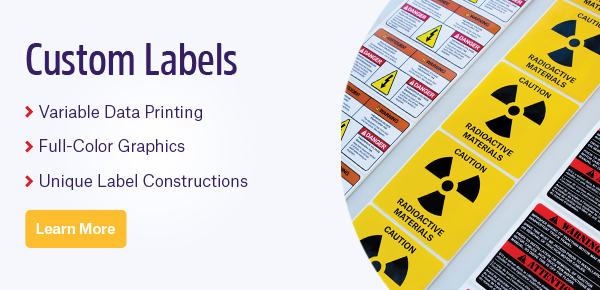 One of the key aspects of industrial optimization is the need to cut down time Radio-frequency identification (RFID) is an upcoming technology that more and more companies are beginning to utilize to maximize productivity and eliminate errors. RFID technology is primarily used to track inventory, tools, and equipment in sectors ranging from oil and gas and construction to retail and the automotive industry. Integrating any new system, like RFID, into your business requires a thorough understanding of the system as well as best practices when performing the upgrade. Here, we’ve reviewed the factors to consider to help use RFID to its maximum potential.
One of the key aspects of industrial optimization is the need to cut down time Radio-frequency identification (RFID) is an upcoming technology that more and more companies are beginning to utilize to maximize productivity and eliminate errors. RFID technology is primarily used to track inventory, tools, and equipment in sectors ranging from oil and gas and construction to retail and the automotive industry. Integrating any new system, like RFID, into your business requires a thorough understanding of the system as well as best practices when performing the upgrade. Here, we’ve reviewed the factors to consider to help use RFID to its maximum potential.
Designing the System
An efficient identification system is built from the ground up; therefore, it’s necessary to determine the exact RFID specifications required for your facility to utilize its technology best. These can include:
Active vs passive tags
Active tags continuously emit a signal, while passive systems require a scanner to emit a signal, which elicits a signal from the tag or label.
Circular vs linear antennas
What separates these two types of antennas is their polarization, which ultimately affects their properties. Circular antennas read from wider angles and shorter distances compared with linear antennas. They can also read tags in different orientations. In contrast, when tag orientation is controlled, linear antennas provide better read performance and accuracy.
Selecting RFID tags and labels
The RFID tag or label should be optimized for any specific environmental requirements. Certain manufacturers, like IndustriTAG, can generate RFID inlays in almost any type of label, which makes it possible to adapt them to a wide variety of conditions, including cold storage, high-heat applications, and chemical exposure.
Attaching tags/labels to the assets
Because nearly any label can come outfitted with an RFID inlay, there is a lot of flexibility regarding the types of items RFID can be utilized with. However, poor label placement may still affect tag and/or label readability. Labels that detach from their surfaces are an especially prevalent problem, so it’s important to use a qualified label manufacturer and to test that your labels withstand the necessary conditions (e.g. cold storage, chemical exposure, high heat).
Tag commissioning
Tag commissioning involves programming tags with unique identification numbers. It’s recommended to commission the tags prior to asset tagging because once they are affixed to their items, it’s much easier to unknowingly commission a tag more than once. A better strategy is to commission the tags prior to use, either through the supplier or in-house.
Site analysis
The dimensions and construction details (i.e. metal walls vs gyprock) may affect the ability of your tags to be read. RFID signals are unlikely to penetrate thick metal, so items located close to or inside metal containers or rooms may require special consideration.
Incorporation of barcodes and RFID
RFID inlays can be incorporated into printable labels, allowing them to be encoded with electronic data and printed with readable text using an RFID-capable printer. Such printed labels can support visual, barcoded, and electronic data. Integrating redundant tracking systems provides a safeguard in case RFID fails to scan, but efficiently managing the two in practice requires an extra level of planning during the design stage.
Application Testing & Analysis
Once an RFID system is designed, it’s essential that it’s tested before wholesale integration. Remember, testing doesn’t need to be an individual process. Collaborating with your RFID supplier is an ideal way to help optimize the system, as suppliers can provide sample RFID tags and labels to test and real-world application knowledge. With the right personnel, customized solutions can be created from scratch that match the exact technical requirements of the existing workflow. This can be done in real-time while the system is being tested, as the supplier can review the results of each run and help adjust the system accordingly.
Required Documentation
Documenting all RFID tags and labels is necessary for many industries, especially those in manufacturing, retail, and construction. These sectors require accurate record-keeping, particularly regarding inventory, sales, and safety checks. When writing up documentation for your tags, the following must be taken into account:
- Regulatory compliance issues
- Security analysis
- Access to information
- Tag type
- Data storage (in-tag, in-house, cloud-based)
- Maintenance
Training & Troubleshooting
Finally, once the RFID system is fully integrated, personnel must be trained to use it. Training can be a straightforward process if staff are given a detailed SOP that defines exact roles and protocols for each member. However, these SOPs are likely to be imperfect at the beginning. Once personnel begins to formally use the system, registering training and troubleshooting with a computer-based management system can help track problems immediately as they arise so that all members are aware and able to find solutions. Here, partnering with the RFID supplier is again beneficial, as any issues that occur over the long term can also be remedied via contacting the supplier.

